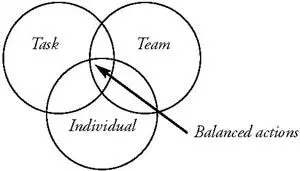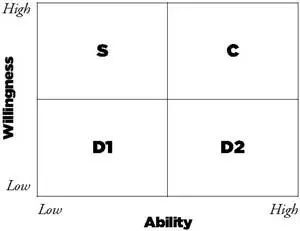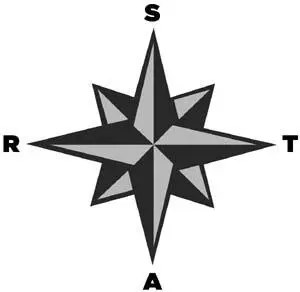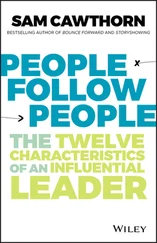If you don’t know your boss’s expectations, then achieving them will be purely a matter of chance.
he was also tasked to investigate new markets and recruit new sales staff to exploit these. Unsure of priorities, he tried to achieve everything as soon as possible. After nine months he collapsed with exhaustion, having reached none of his targets or objectives in full. His team were branded as failures and dispersed.
1.2 Decide if you are a manager or a leader
Are you a manager or a leader? This is not about your job title. ‘Leaders’ have their ‘followers’, whereas ‘managers’ have ‘the managed’. This may seem like a purely semantic difference, but there are different concepts behind the words.
• Followers.These people actively choose to follow you. They want to support you, they want to work for you, and they want you to succeed, because your success proves they were right to follow you.
• The managed.These people are relatively passive in working for you. They are happy to let you make all their decisions for them. They do as they are told and leave it up to you to check the quality of their work. They don’t try to use their initiative because they believe that is what you are paid for. They give you the ‘right to manage’.
one minute wonderThere is a quote from a staff members’ annual report that reads: “This person is capable of producing adequate results when under constant supervision and when caught like a rat in a trap!” Does this describe any of your own people?
It is probably pretty clear that your life will be more fulfilling and more enjoyable if you are a leader than a manager, but pressure (target-driven organizations, the desire to be indispensable, the feeling of responsibility) tends to encourage micro-management.
You probably need to ‘manage’ people who have little experience and expertise, but as people grow in ability and knowledge you can slowly switch from ‘manager’ to ‘leader’. Of course, if you take over a team that is already performing, you may be able to go straight to leadership and followership from day one.
A leader attracts followers, whereas a manager has to supervise the managed.
1.3 Balance your decisions
Are you the leader of the team, or the person tasked to get things done, or the person tasked with looking after the individual team members? Actually, if you want to manage people well, you need to take on all three of these roles.
There is a concept called ‘Pyrrhic Victory’, which describes a situation in which an objective has been achieved – but at too high a cost.
• If you make all decisions with the primary objective of achieving the task at any cost, then you might end up destroying the team on the way. But…
• If you make all your decisions with the primary aim of keeping the team intact and happy, then you probably won’t achieve the task But…
• If you are determined to ensure that each and every individual is safe, happy and looked after, then you won’t fulfil the task and the team will fall apart as well.
John Adair, the world’s first Professor of Leadership Studies, developed a model called Action Centred Leadership. His contention is that as a leader or manager you need to ensure that every decision and action you take balances the needs of the task, the team and the individuals. By doing this you stand the greatest chance of achieving the task, having a cohesive and capable team still in place for the next task, and having individuals who still have a good quality of life, and feel valued and respected.
This model is usually represented by three interlocking circles, from which it gets its name, Action Centred Leadership.

Answering yes or no to any of the questions above doesn’t tell you the right thing to do. By asking the questions before you act, you will get a chance to balance your decision.
Balanced decisions every day make for good leadership – not task focused one day, team focused the next!
“What?” I hear you cry! “Surely I should manage everyone in the same way to be fair?” Well, think about it: imagine you have two people, one is experienced, competent and willing, and the other is new to the task, has little ability and is lazy. Would it be fair to manage each of them in the same way? Would it motivate them both?
You have to manage or lead in a way that suits the situation. This is called Situational Leadership, a title originally coined by Ken Blanchard and Paul Hersey. Here is a simple primer to the idea:
• Consider an individual’s ability on a scale of low to high. This is their ability to do the job you are asking of them, not just a reflection of their age or years of service.
• Next consider their willingness to do this particular job, again on a scale of low to high.
• Now imagine these two values plotted on a graph, like the one opposite.
• The notations on the graph (C, D1, D2, S) refer to the paragraphs below the graph, which tell you how you might best manage this particular person.

• S = Support.This person is very willing but lacking in skill/ability. They need support in terms of demonstrations, training and practice (see Secret 4.8).
• C = Coaching.This person is both willing and able and therefore only needs some light coaching in order to perform well.
• D1 = Directing 1.This person has both low ability and low willingness. They are going to need much more in the way of directing – orders, supervision and checking.
• D2 = Directing 2.This person has already proved their ability but their willingness is low. They don’t need training and demonstration; they need some direction from you to understand why the task is important and how they will benefit personally by doing it well.
It is vital for your success and the success of your people that you manage in a way that suits the situation.
As a manager, team leader, supervisor or foreman, you have to delegate work to others. Delegating is a fundamental skill of management, but it is also one that many managers do very badly. There is a skill to learn in order to delegate effectively.
The more you delegate, the more time you will have to manage people and improve processes. In order to delegate effectively, you need to ensure that the person to whom you delegate a task is provided with four things: Skill, Time, Authority and Responsibility. The first letters of these words spell the word STAR,which makes them easy to remember, as shown below.

• S = Skill.You need to ensure that the person has the skill and ability to do the task. This doesn’t mean that they have to be as good at the task as you. (You may be able to give them more time to do it than you would otherwise have available to do it yourself.)
• T = Time.You need to make sure that the person has adequate time to complete the task at the pace that’s likely for their ability. This means allowing for the actual time this task will take alongside any other tasks they need to do. If you are their manager, they may be reluctant to admit that they don’t have the time. Try to ask open questions (“When will you do this?”) rather than leading questions (“You have enough time to do this, don’t you?”) to ascertain their workload.
Читать дальше















